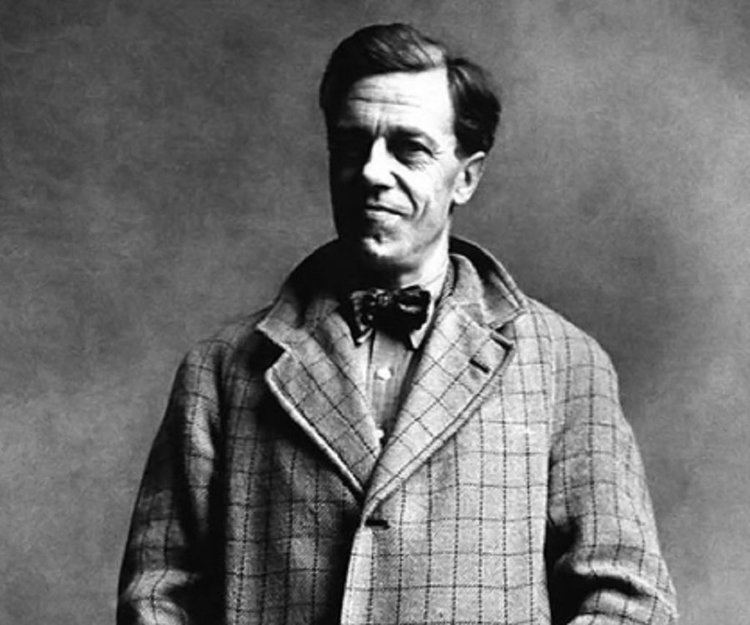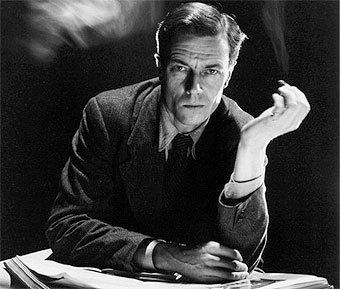Pen name Nicholas Blake Role Poet Name Cecil Day-Lewis | Nationality British Occupation Poet, novelist Movies The Beast Must Die | |
 | ||
Died May 22, 1972, Hadley Wood, United Kingdom Children Daniel Day-Lewis, Tamasin Day-Lewis, Sean Day-Lewis, Nicholas Day-Lewis Books The Otterbury Incident, The Beast Must Die, The poetic image, The complete poems of, Thou shell of death Similar People Daniel Day‑Lewis, Jill Balcon, Tamasin Day‑Lewis, Stephen Spender, Michael Balcon | ||
Walking away by cecil day lewis
Cecil Day-Lewis (or Day Lewis) (27 April 1904 – 22 May 1972), often writing as C. Day-Lewis, was an Anglo-Irish poet and the Poet Laureate of the United Kingdom from 1968 until his death in 1972. He also wrote mystery stories under the pseudonym of Nicholas Blake. He was the father of actor Daniel Day-Lewis and documentary filmmaker and television chef Tamasin Day-Lewis.
Contents
- Walking away by cecil day lewis
- Cecil Day Lewis reads four of his poems
- Life and work
- Nicholas Blake
- Political views
- Poetry collections
- Essay collections
- Translations
- Novels written under his own name
- Novels written as Nicholas Blake
- Childrens novels
- Autobiography
- References

Cecil Day Lewis reads four of his poems :
Life and work

Day-Lewis was born in Ballintubbert, Athy/Stradbally border, Queen's County (now known as County Laois), Ireland. He was the son of Frank Day-Lewis (died 29 July 1937), Church of Ireland Rector of that parish, and Kathleen Blake (née Squires; died 1906). Some of his family were from England (Hertfordshire and Canterbury). His father took on the surname "Day-Lewis" as a combination of his own birth father's ("Day") and adoptive father's ("Lewis") surnames. In his autobiography The Buried Day (1960), he wrote "As a writer I do not use the hyphen in my surname – a piece of inverted snobbery which has produced rather mixed results".

After the death of his mother in 1906, Cecil was brought up in London by his father, with the help of an aunt, spending summer holidays with relatives in County Wexford. He was educated at Sherborne School and at Wadham College, Oxford. In Oxford, Day-Lewis became part of the circle gathered around W. H. Auden and helped him to edit Oxford Poetry 1927. His first collection of poems, Beechen Vigil, appeared in 1925.

In 1928 he married Constance Mary King, the daughter of a Sherborne master (i.e. teacher), and worked as a schoolmaster in three schools, including Larchfield School, Helensburgh, Scotland (now Lomond School). During the 1940s he had a long and troubled love affair with the novelist Rosamond Lehmann. His first marriage was dissolved in 1951, and he married actress Jill Balcon, daughter of Michael Balcon.

During the Second World War he worked as a publications editor in the Ministry of Information, an institution satirised by George Orwell in his dystopian Nineteen Eighty-Four, but equally based on Orwell's experience of the BBC. During the Second World War his work was now no longer so influenced by Auden and he was developing a more traditional style of lyricism. Some critics believe that he reached his full stature as a poet in Word Over All (1943), when he finally distanced himself from Auden. After the war he joined the publisher Chatto & Windus as a director and senior editor.
In 1946, Day-Lewis was a lecturer at Cambridge University, publishing his lectures in The Poetic Image (1947). Day-Lewis was made a Commander of the Most Excellent Order of the British Empire by Elizabeth II in her 1950 Birthday Honours. He later taught poetry at Oxford, where he was Professor of Poetry from 1951 to 1956. During 1962–1963, he was the Norton Professor at Harvard University. Day-Lewis was appointed Poet Laureate in 1968, in succession to John Masefield.
Day-Lewis was chairman of the Arts Council Literature Panel, vice-president of the Royal Society of Literature, an Honorary Member of the American Academy of Arts and Letters, a Member of the Irish Academy of Letters and a Professor of Rhetoric at Gresham College, London.
Cecil Day-Lewis died from pancreatic cancer on 22 May 1972, aged 68, at Lemmons, the Hertfordshire home of Kingsley Amis and Elizabeth Jane Howard, where he and his family were staying. He was a great admirer of Thomas Hardy, and had arranged to be buried as close as possible to the author's grave at St Michael's Church in Stinsford, Dorset.
Day-Lewis's epitaph, taken from his poem Is it Far to Go?, reads:
Day-Lewis's two marriages yielded four children, including Academy Award-winning actor Daniel Day-Lewis, food writer and journalist Tamasin Day-Lewis, and TV critic and writer Sean Day-Lewis, who wrote a biography of his father, C. Day Lewis: An English Literary Life (1980).
Daniel Day-Lewis donated his father’s archive to the Bodleian library.
Nicholas Blake
In 1935, Day-Lewis decided to supplement his income from poetry by writing a detective novel, A Question of Proof, in which he created Nigel Strangeways, an amateur investigator and gentleman detective who, as the nephew of an Assistant Commissioner at Scotland Yard, has the same access to, and good relations with, official crime investigation bodies as those enjoyed by other fictional sleuths such as Ellery Queen, Philo Vance and Lord Peter Wimsey. This was followed by nineteen more crime novels. (In the first Nigel Strangeways novel, the detective is modelled on W. H. Auden, but Strangeways becomes a far less extravagant and more serious figure in later novels.) From the mid-1930s Day-Lewis was able to earn his living by writing. Four of the Blake novels – A Tangled Web, Penknife in My Heart, The Deadly Joker, The Private Wound – do not feature Strangeways.
Minute for Murder is set against the background of Day-Lewis's Second World War experiences in the Ministry of Information. Head of a Traveller features as a principal character a well-known poet, currently frustrated and blocked from writing, whose best poetic days are long behind him; the reader is free to speculate whether the author is describing himself, one of his colleagues, or has entirely invented the character.
Political views
In his youth, Day-Lewis adopted communist views, becoming a member of the Communist Party of Great Britain from 1935 to 1938, and his early poetry was marked by didacticism and a preoccupation with social themes. In 1937 he edited The Mind in Chains: Socialism and the Cultural Revolution. In the introduction, he supported a popular front against a "Capitalism that has no further use for culture". He explains that the title refers to Prometheus bound by his chains, quotes Shelley's preface to Prometheus Unbound and says the contributors believe that "the Promethean fire of enlightenment, which should be given for the benefit of mankind at large, is being used at present to stoke up the furnaces of private profit". The contributors were: Rex Warner, Edward Upward, Arthur Calder-Marshall, Barbara Nixon, Anthony Blunt, Alan Bush, Charles Madge, Alistair Brown, J. D. Bernal, T. A. Jackson and Edgell Rickword.
After the late 1930s, he gradually became disillusioned with communism. Among his works is his autobiography, Buried Day (1960), in which he renounces his communist views, while his detective story, The Sad Variety (1964), contains a scathing portrayal of doctrinaire communists, the repression of the 1956 Hungarian uprising, and the ruthless tactics of Soviet intelligence agents.
